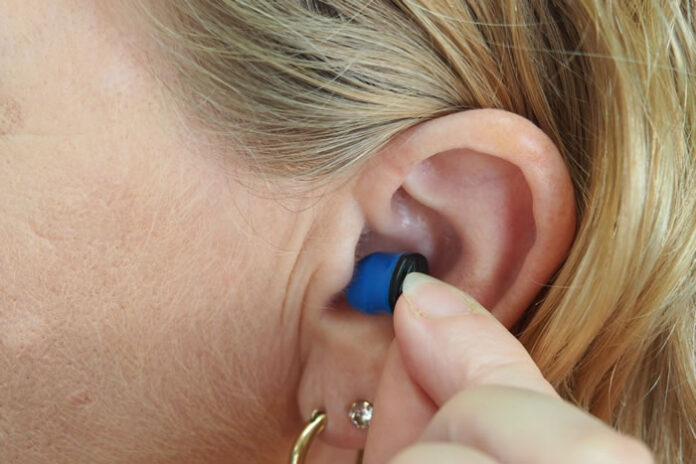Spring 2021 saw the roll-out of new TV customization and fresh content options to cabin-fevered families, such as National Geographic WILD shows added to Disney+ and custom shows created for platforms like NBC’s Peacock and HBO Max. Many have already kitted out their home theater experience with an impressive array of soundbars and specialized speakers for immersive surround sound. However, the tech sector should list to those with hearing loss.
Music lovers and those seeking the experience that most strongly resembles the theater are embracing surround sound options in greater numbers. For example, systems such as Dolby’s Atmos, in which each sound is recorded individually to give a more realistic perception of it depending on its proximity to the listener. For some, the age of the cinematic living room that offers a 3D multi-channel experience and the ability to ‘chase the sound’ with your ears is exactly what is called for to escape the pandemic stressors. With all this innovative technology, the tech sector should listen to those that have hearing impairments.
Why the tech sector should listen
However, the options for people with hearing loss remain limited. Top tech and consumer sites still recommend neck and room loops and stethosets like TV Ears for people with hearing loss looking to access something approximating surround sound. True there are wireless options that allow the TV to transmit the audio, either to a headset or hearing aid. But these options tend to conflict with other speakers connected to the television via Bluetooth. The sound is often compressed, can lag the picture, and even lacks discrete volume control. Let’s be clear – this is no movie theatre, it’s more like huddling around the gramophone.
The World Health Organization’s World Report on Hearing reports that over 5% of the world’s population – or 430 million people – require rehabilitation to address their ‘disabling’ hearing loss. With issues on the upper end of this range, faint or delicate audio objects may get lost, even in the peaceful setting of one’s home. To deliver an optimal experience, you need products that will ensure those with hearing issues are both included and enjoy the same premium tailored experience as the other members of their family. This is why the tech sector should listen.
Quality design can ensure that the top-of-the-line soundtracks, equipped to deliver movie-quality surround sound, are available for streaming through CD-quality codecs like aptX. While not precisely the same as the surround sound unimpaired listeners enjoy, this solution can provide a preferential audio experience. Many audiophiles suggest that the number of sonic drivers is a key component in replicating high-quality surround sound in a headphone or earbud form factor. Consumer Reports found that shoddy devices “could actually further diminish your ability to hear,” underscoring the importance of top-notch audio.
What matters most
But it’s one thing for the millions of Americans with mild to moderate hearing loss to be missing first-class entertainment. It’s quite another that they’re disproportionately losing out on social interactions. Remote work, distance learning and lockdowns mean we all now must rely more on Zoom and phone calls in our daily lives. This makes it harder to get all the in-person social cues that help everyone navigate work and social relationships. This could prove a disadvantage for some, feeling that Zoom fatigue adds to their mental fatigue. The tech sector should listen to those with hearing and other impairments.
The very people who require hearing assistance most are those afforded the fewest options. The pandemic has reduced access for in-person services like visiting an audiologist. Those with hearing loss of any kind may be feeling disproportionately isolated during a time when everyone is isolated. It’s well-documented in audiology research that improved hearing health supports memory, retention, and brain function. Older adults with untreated hearing loss may incur health care costs on the magnitude of 46 percent greater than those who access support, according to a study from Johns Hopkins Bloomberg School of Public Health. Over a decade, these costs could amount to $22,434 per person. Mild hearing loss can double the risk of an adult contracting dementia; moderate hearing loss can triple this risk.
Stop, listen and improve
Tech executives should not overlook these trends: the growing number of Americans who require hearing assistance, the desire to participate in premium experiences like surround sound, the added strain brought on by the pandemic, and the concerns or stigma associated with certain hearing assistive devices.
In an age where consumers have more choice over streaming TV content, that they can enjoy on larger screens with even more sophisticated cinematic audio, let’s not forget those with hearing loss. Sure, they want to enjoy the movie or the sports game just as much as the rest of their family. But they face bigger challenges, in this remote world, just getting their work done, connecting with loved ones, and feeling connected. To me, that sounds like a problem worth solving – affordable, accessible hearing health. That’s why it’s important that the tech sector should listen to those with hearing loss.















